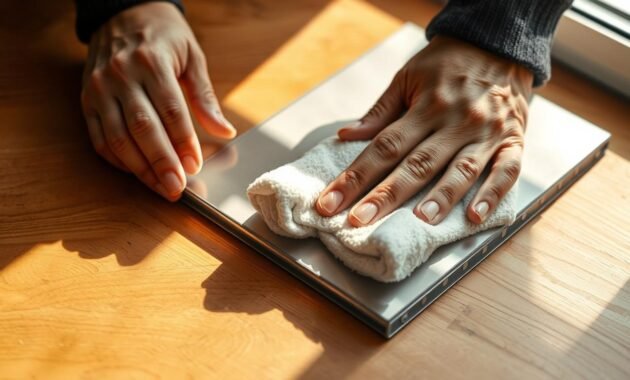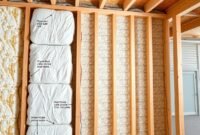Are you tired of drafty windows making your home cold and your bills high? Cold winters and hot summers can really hurt your wallet. Removable magnetic window insulation is a big help for those who want to save energy.
I found a solution that changes everything. Magnetic window insulation is easy and cheap to use. It seals your windows, keeps out cold and hot air, and cuts down on energy costs. This guide will show you how to install it fast and right.
Whether you love DIY projects or just want to save energy, this guide is for you. You’ll learn how to make your home warmer and more energy-efficient with this cool insulation trick.

Understanding Window Insulation Benefits and Energy Savings
Window insulation is a big change for homeowners. It makes homes more comfortable and energy-efficient. Magnetic window systems create a special air space.
When I found out about magnetic window insulation, I was impressed. It’s not just for keeping cold air out. It’s a way to make your home better in many ways.
Lower Energy Bills and Temperature Control
Magnetic window insulation helps control your home’s temperature. It creates a space between your window and the insulation. This means:
- You lose less heat in winter
- You gain less heat in summer
- Your home stays at a steady temperature
- You use up to 30% less energy
Noise Reduction Properties
City living can be noisy. Magnetic window insulation helps block out street sounds. The air space between your window and the insulation absorbs sound.
UV Protection for Furniture
Window insulation also protects your furniture. It keeps out harmful UV rays that can damage your home’s interior. This solution helps your furniture last longer.
Read also: How To Insulate Your Walls Without Removing The Drywall
Essential Tools and Materials Needed for Installation
Getting ready for your magnetic window insulation project means gathering the right tools and materials. I’ll guide you through what you need for a successful installation of your window insulation kit.
Before you start, make sure you have these key items. They’ll help make your window insulation process smooth and efficient:
- Measuring tape for accurate window dimensions
- Sharp scissors or utility knife
- Clean cloth or paper towels
- Adhesive magnetic strip
- Magnetic tape
- Cleaning solution
Your window insulation kit usually comes with most of these materials. It’s a good idea to check what’s in the kit before buying more supplies.
| Tool/Material | Purpose | Recommended Type |
|---|---|---|
| Measuring Tape | Precise window measurements | Metal retractable tape, 25-foot length |
| Adhesive Magnetic Strip | Creating secure window seal | Self-adhesive, weather-resistant |
| Magnetic Tape | Attaching insulation film | Strong magnetic backing |
| Cleaning Solution | Preparing window surface | Streak-free glass cleaner |
Pro tip: Always clean your window frames well before applying any magnetic tape or adhesive magnetic strips. This ensures a strong, long-lasting bond for your window insulation kit.
How to Measure Your Windows for Magnetic Insulation
Getting precise measurements is key for magnetic window insulation. A perfect fit means better energy efficiency. I’ll show you how to measure your window frame accurately and avoid mistakes.
Step-by-Step Measurement Guide
Follow these steps for accurate measurements:
- Measure the width at three points: top, middle, and bottom
- Record the smallest measurement for a proper fit
- Measure the height at three points: left, center, and right side
- Use the smallest measurement again
Common Measurement Mistakes to Avoid
Being precise is important with window frames. Here are mistakes to avoid:
- Rounding measurements
- Not accounting for window frame variations
- Measuring only once
- Ignoring possible obstructions
Accounting for Window Frame Variations
Different window frames need different approaches. Older homes might have uneven frames, so take multiple measurements. Look for bumps, moldings, or architectural details that could affect your magnetic insulation fit.
| Window Type | Measurement Technique | Special Considerations |
|---|---|---|
| Wooden Frames | Measure inside mounting area | Check for warping or unevenness |
| Vinyl Frames | Measure from inner edge | Account for slight frame flex |
| Metal Frames | Measure entire frame width | Verify no rust or damage |
By following these tips, you’ll have a detailed plan for your magnetic window insulation. This ensures a perfect, energy-efficient fit.
Preparing Your Windows for Removable Magnetic Window Insulation

Getting your windows ready for magnetic insulation is key. A clean, well-prepared window means better performance. This is the first step in the installation process.
Before you start, make sure you have these materials:
- Microfiber cloths
- Glass cleaner
- Rubbing alcohol
- Soft-bristled brush
- Cleaning solution
Begin by cleaning the whole window. Make sure to remove dirt, dust, or grime. This is important for the magnetic seal to stick well. Use a microfiber cloth with glass cleaner to avoid streaks.
Don’t forget the window frame and edges. Use rubbing alcohol to get rid of tough residue or old adhesive. This makes the surface smooth for your magnetic insulation.
| Cleaning Step | Purpose | Recommended Method |
|---|---|---|
| Initial Cleaning | Remove surface dirt | Glass cleaner + microfiber cloth |
| Deep Cleaning | Eliminate residue | Rubbing alcohol + soft cloth |
| Frame Preparation | Ensure smooth surface | Soft-bristled brush + cleaning solution |
Look for any imperfections or damage. Fixing minor issues before installation is important. It ensures a perfect fit and better energy efficiency.
Different Types of Magnetic Window Insulation Systems
Magnetic window insulation offers many solutions for homeowners. It helps improve energy efficiency and comfort. Each system has unique features for different windows and installation needs.
Choosing a removable magnetic window insulation system means looking at several main options. These options meet various architectural needs and personal tastes.
Surface Mount Options
Surface mount magnetic window insulation is easy to install on most windows. It uses:
- Double-sided tape magnetic strips for quick attachment
- Magnetic frames that stick to window surfaces
- Little tools needed for setup
In-Jamb Installation Choices
In-jamb magnetic window insulation is more integrated. It involves:
- Accurate measurements of window jamb depth
- Custom-made magnetic panels
- Smooth fit with existing window frames
Custom Solutions for Unique Windows
For special window shapes, custom magnetic insulation systems are available. These are made to fit unique designs perfectly, ensuring full coverage and best performance.
| Installation Type | Difficulty Level | Cost Range | Best For |
|---|---|---|---|
| Surface Mount | Easy | $50-$150 | Standard windows |
| In-Jamb | Moderate | $100-$300 | Precise window fits |
| Custom Solution | Complex | $200-$500 | Unique architectural designs |
Knowing about these magnetic window insulation systems helps you pick the right one for your home.
Step-by-Step Installation Process
Installing magnetic window insulation film can make your home more energy-efficient. I’ll guide you through the steps to apply your window insulation film and roll of plastic perfectly.
- Magnetic window insulation film
- Clean microfiber cloth
- Scissors
- Magnetic tape or strips
- Measuring tape
Start by cleaning your window frame well. Get rid of dust, dirt, or debris that could stop the seal. Rubbing alcohol works best for cleaning.
- Measure your window precisely
- Cut the window insulation film to match window dimensions
- Apply magnetic strips around the window frame
- Carefully attach the roll of plastic film to the magnetic strips
- Smooth out any air bubbles or wrinkles
When putting on the window insulation film, do it slowly and carefully. Start at one corner and smooth the film over the window. Use gentle pressure to avoid bubbles.
Read also: How to Insulate Single Pane Windows?
| Installation Step | Time Required | Difficulty Level |
|---|---|---|
| Window Cleaning | 10-15 minutes | Easy |
| Magnetic Strip Application | 15-20 minutes | Medium |
| Film Installation | 20-30 minutes | Moderate |
Pro tip: Work in a well-lit area and take your time. Rushing can cause misalignment or air bubbles, which reduce insulation effectiveness.
Creating an Airtight Magnetic Seal
Making a perfect magnetic seal is key for better window insulation. The right steps help block noise and keep your home warm. Let’s go over how to get a top-notch seal for a cozy and energy-saving home.
Proper Alignment Techniques
Getting a tight seal needs care and patience. Begin by lining up the magnetic strips on the window frame. Remember these important tips:
- Clean the window frame well before you start
- Make sure the magnetic strip edges touch smoothly
- Keep dust or dirt away from the magnetic connection
- Press the insulation gently and evenly into place
Testing the Seal Effectiveness
It’s important to check if your magnetic window insulation works well. Try these easy tests:
- Use a candle flame test to see if air leaks
- Check temperature differences with an infrared thermometer
- Listen for outside noise coming in
- Look for any light leaks around the insulation
A great seal keeps your home warm and quiet. Take your time to install it right. This way, you’ll enjoy a more comfortable home.
Maintenance and Cleaning Guidelines

Keeping your removable magnetic window insulation in top shape is key. I’ll show you how to keep it effective and looking good. Follow these steps to maintain your window insulation.
Cleaning your magnetic window insulation is easy. Use a soft touch to avoid damaging the materials and magnetic strips. Start by carefully removing the panels from the window frame.
- Use a soft microfiber cloth for dust removal
- Prepare a mild soap solution for deeper cleaning
- Avoid abrasive cleaners or harsh chemicals
- Dry thoroughly before reinstalling
How often you clean your window insulation matters. Clean it at least twice a year – in spring and fall. This keeps it free from dirt and ensures it works well.
Look out for these signs it’s time for a new magnetic window insulation:
- Visible wear or damage to magnetic strips
- Decreased ability to create an airtight seal
- Noticeable gaps or warping
- Persistent dirt or stains that won’t clean off
By following these tips, your magnetic window insulation will stay a valuable investment. It will keep your home energy-efficient and comfortable for years.
Troubleshooting Common Installation Issues
Installing removable magnetic window insulation can sometimes present unexpected challenges. Even with careful preparation, you might encounter a few hiccups during the process. Understanding how to address these common installation issues will help you achieve a perfect seal and maximize the effectiveness of your magnetic window insulation.
Dealing with Gaps and Leaks
Gaps and leaks can significantly reduce the performance of your magnetic window insulation. Here are some key strategies to identify and resolve these problems:
- Inspect the entire window perimeter for visible gaps
- Use weatherstripping to fill small openings
- Check magnetic strip alignment carefully
- Ensure consistent magnetic contact along all edges
Fixing Alignment Problems
Proper alignment is key for an effective removable magnetic window insulation system. When misalignment occurs, follow these troubleshooting steps:
- Verify window frame is clean and smooth
- Realign magnetic strips gradually
- Use gentle pressure to adjust positioning
- Test magnetic connection after each adjustment
| Issue | Potential Cause | Solution |
|---|---|---|
| Uneven Magnetic Seal | Warped Window Frame | Sand frame edges or use flexible magnetic strips |
| Weak Magnetic Connection | Dirty Magnetic Surfaces | Clean magnetic strips with alcohol solution |
| Partial Detachment | Incorrect Magnetic Strength | Replace with stronger magnetic insulation |
By carefully addressing these common installation challenges, you can ensure your magnetic window insulation provides optimal energy efficiency and comfort. Remember that patience and precision are key to achieving a perfect installation.
Seasonal Installation and Removal Tips
Removable window insulation is great for keeping your home cozy all year. I’ll share tips on when and how to put it up and take it down. This will help you stay comfortable and save on energy bills.
Knowing when to install and remove your window insulation is key. Each season has its own needs for keeping your windows insulated.
- Winter Installation: Prioritize complete coverage and tight seals
- Summer Removal: Clean and store carefully for next season
- Spring/Fall Transitions: Check for wear and possible replacements
In winter, your window insulation is vital for keeping warm. Install the panels before the first frost. This stops cold air from getting in and cuts down on heating costs.
| Season | Installation Focus | Key Considerations |
|---|---|---|
| Winter | Complete coverage | Minimize air leaks, maximize thermal protection |
| Summer | Easy removal | Preserve panel integrity, clean surfaces |
| Transitional Seasons | Inspect and maintain | Check magnetic strips, replace if necessary |
When taking down your insulation for warmer months, store it in a cool, dry spot. Wrap it well to avoid damage. This way, it’ll be ready for next winter.
Pro tip: Always clean your windows before putting back the insulation. This ensures a tight seal and the best performance.
Comparing Magnetic Insulation to Other Window Solutions
Homeowners have many options for insulating windows. I’ll compare magnetic window insulation with other methods. This will help you choose the best for your home.
- Magnetic Window Insulation
- Window Insulation Film
- Thermal Curtains
- Traditional Caulking
Here’s a detailed comparison of these window insulation methods:
| Method | Cost | Installation | Effectiveness | Durability |
|---|---|---|---|---|
| Magnetic Insulation | Medium | Easy | High | Long-lasting |
| Window Film | Low | Moderate | Medium | Short-term |
| Thermal Curtains | Low | Very Easy | Low | Medium |
| Caulking | Low | Difficult | Medium | Medium |
Magnetic window insulation is easy to use and very effective. It’s a removable solution that doesn’t change your windows. Window film is hard to apply, thermal curtains don’t protect much, and caulking is a lot of work.
I think magnetic window insulation is the best choice. It offers great performance, is easy to use, and is cost-effective in the long run.
Read also: Wrap Your Property Using Cheap Shed Insulation
Conclusion
I’ve shown you the world of removable magnetic window insulation. Now, let’s talk about how it can change your home. You know how to install, maintain, and enjoy its benefits.
Adding removable magnetic window insulation is more than just a task. It makes your home cozier, quieter, and more energy-efficient. Every window you upgrade is a step towards a better home and more comfort for you.
Begin with a small area or a few windows. This will help you learn and get better at using this technique. You’ll see real changes: lower energy bills, better temperature control, and a warmer home.
Home improvement is a journey, not a one-time task. Keep learning, stay curious, and ask for help when needed. Your dedication to making your home better is what counts.


